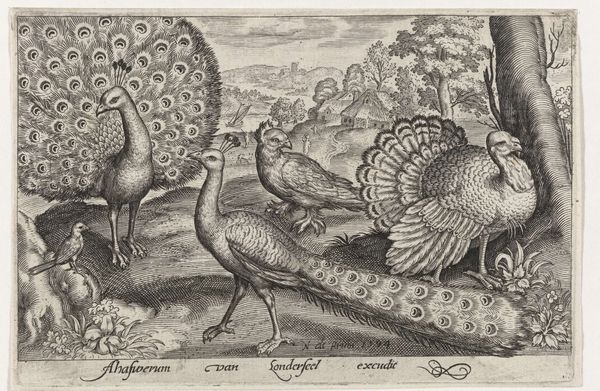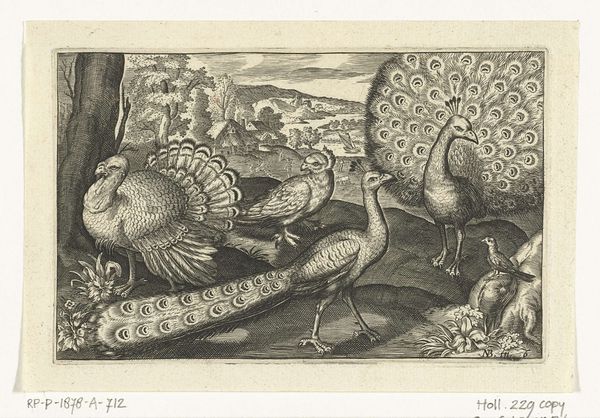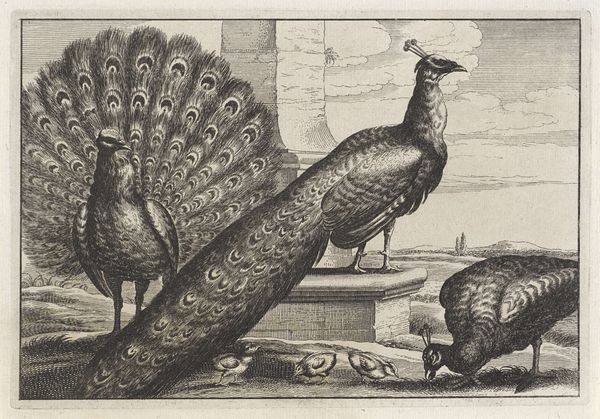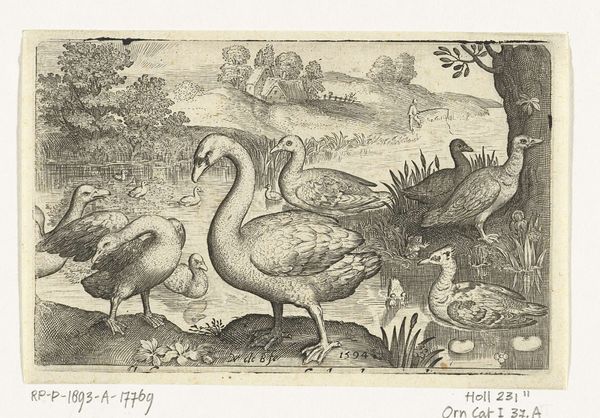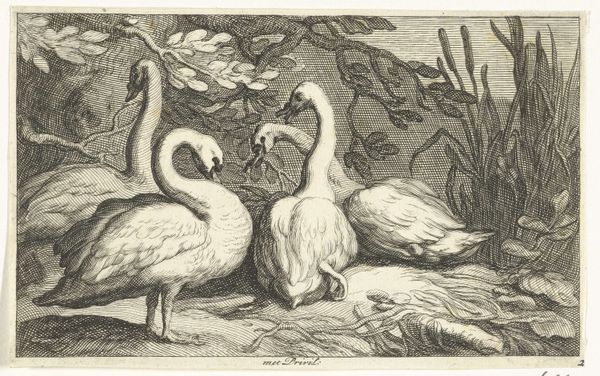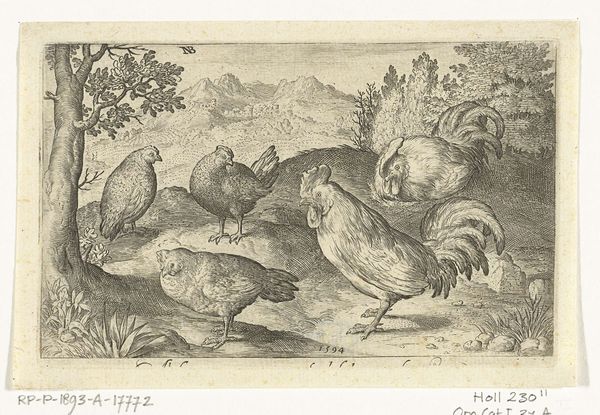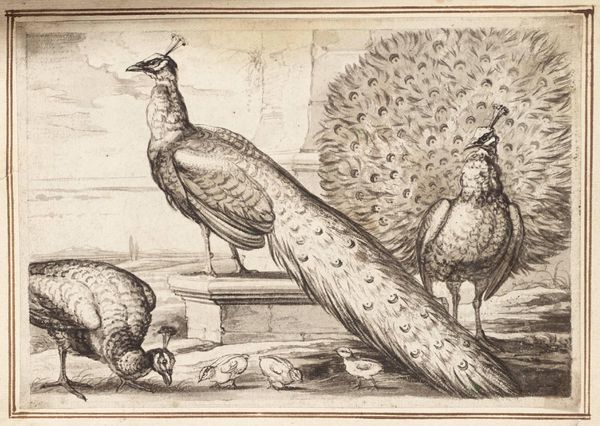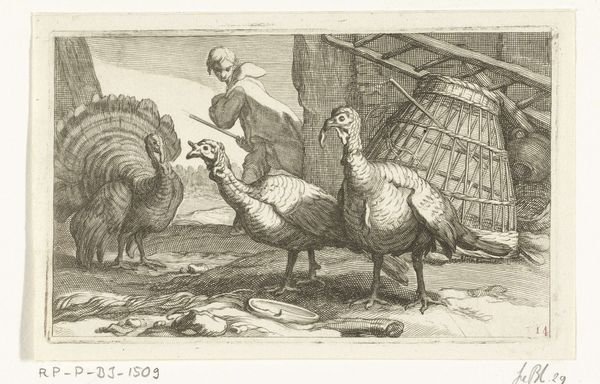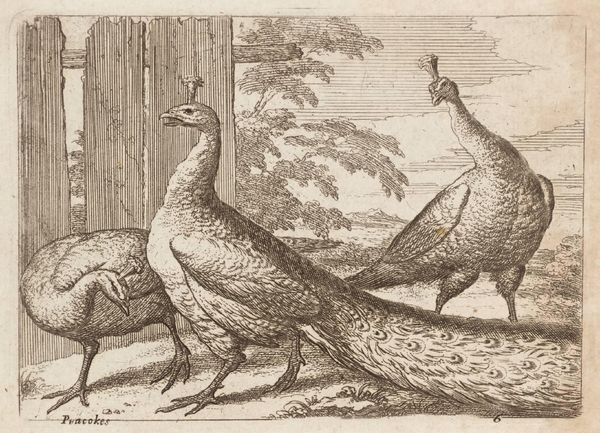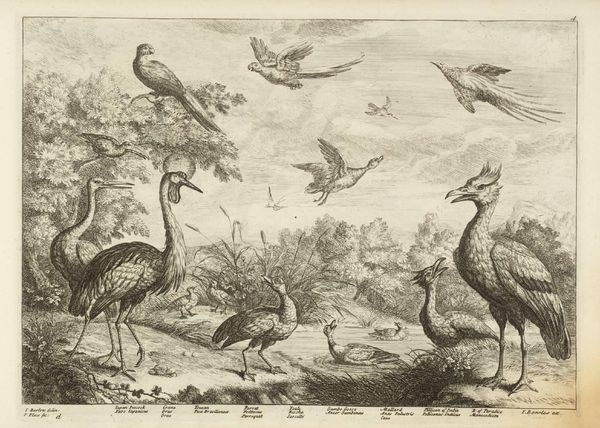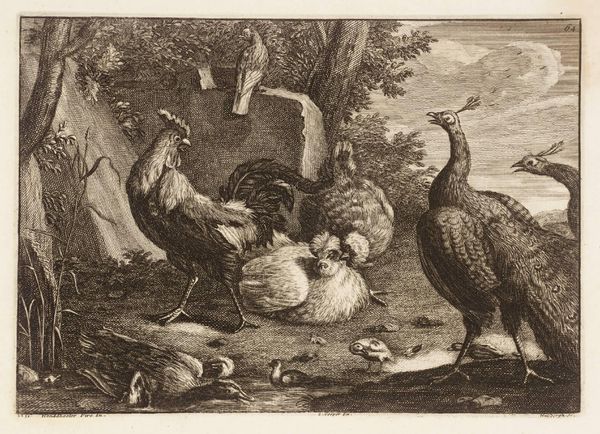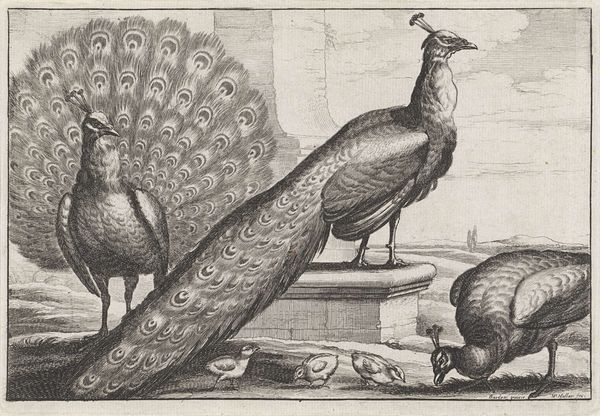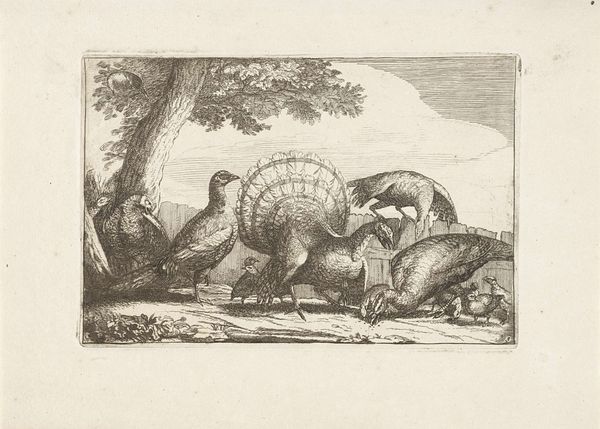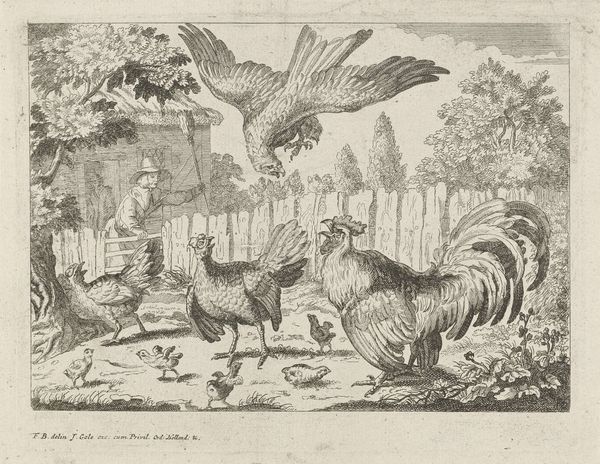
print, engraving
#
animal
#
dutch-golden-age
# print
#
pen sketch
#
old engraving style
#
landscape
#
figuration
#
personal sketchbook
#
sketchbook drawing
#
sketchbook art
#
engraving
Dimensions: height 79 mm, width 128 mm
Copyright: Rijks Museum: Open Domain
Curator: Here we have a rather charming engraving entitled "Two Peacocks and a Turkey," dating back to 1594, by Nicolaes de Bruyn. It’s currently held in the collection of the Rijksmuseum. Editor: What strikes me first is the rather stark contrast in textures. The detailed plumage of the peacocks against the somewhat coarser rendering of the turkeys and the almost scribbled landscape in the background. Curator: Indeed. The image presents a fascinating glimpse into the menageries of the Dutch Golden Age. Such collections became fashionable status symbols among the wealthy elite. The exotic birds, like the peacocks, signalled refinement and global reach. Editor: And the turkeys? They appear so prominently, not relegated to the background at all. It is their inclusion alongside the peacocks that I find most fascinating. Curator: Turkeys, though originating in the Americas, were already domesticated and appearing on European tables. Their inclusion points to a changing relationship with the natural world – from exotic spectacle to potential commodity. Notice also the rural backdrop – not an idealized garden, but a more functional landscape. Editor: The linear quality of the engraving is fascinating too. It relies so heavily on line weight and density to convey form and texture. And consider the way the artist uses the blank space of the paper to suggest light – a minimalist technique creating a vibrant scene. Curator: This speaks to the practical purpose of prints like these. They were circulated widely, informing the public about natural history, but also reinforcing societal values around wealth and status. They became tools for disseminating knowledge and solidifying power. Editor: The precision of line suggests a highly controlled hand. However, when viewing the larger composition one can still appreciate the fluidity and looseness of de Bruyn's etching needle and rendering skills in the natural world. It feels both meticulously crafted and also like a glimpse into the artist's personal observations. Curator: Considering the context—the burgeoning trade networks and the Dutch Republic’s rising power—this artwork reflects the interconnectedness of the natural, economic, and social spheres. It captures a specific moment when the world was rapidly expanding. Editor: Seeing this now, my eye is taken by the landscape that frames the tableau. Curator: Thank you, looking closely allows for a broader contextual awareness. Editor: I see the image now as more than just lines and composition—but as a fragment of our past.
Comments
No comments
Be the first to comment and join the conversation on the ultimate creative platform.
